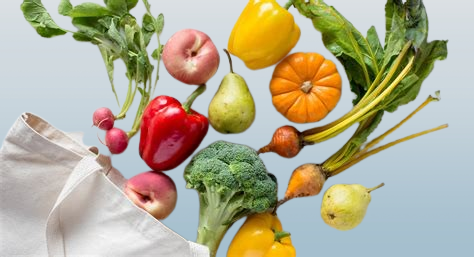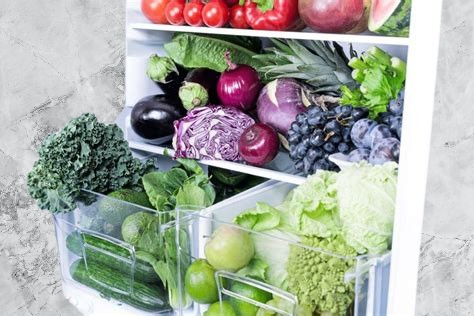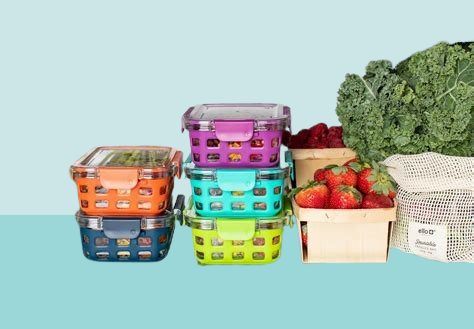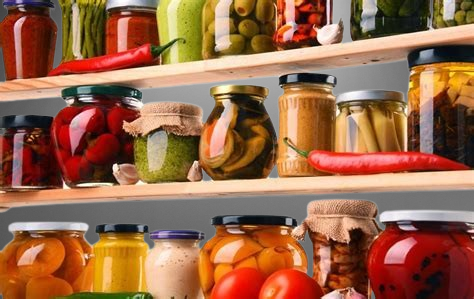Table of Contents
How to improve performance and methods for better results in the field of storing fruits and vegetables The best methods
Proper storage of vegetables and fruits is crucial for maintaining their freshness and quality. This is largely due to the fact that these food items are highly sensitive to various environmental factors, including temperature, humidity, and exposure to light. When stored incorrectly, fruits and vegetables can degrade rapidly, leading to spoilage. Spoiled produce not only affects the flavor and texture of the food but also poses a risk of food waste, impacting the environment and contributing to economic loss.
Temperature plays a significant role in the longevity of vegetables and fruits. For example, refrigeration can extend the life of certain perishable items, such as leafy greens and berries. Conversely, some fruits, like bananas and tomatoes, thrive at room temperature and lose their quality in a cold environment. Understanding the recommended storage temperatures for different produce items helps consumers enjoy fresh and nutritious fruits and vegetables.
Humidity is another key element influencing the shelf life of produce. Many fruits and vegetables require specific humidity levels to retain moisture without becoming soggy or decaying. Storing them in an appropriate environment promotes slower respiration and minimizes the chances of mold growth. Furthermore, exposure to light can accelerate the ripening process, leading to quicker spoilage. It is advisable to keep sensitive items in dark, cool spaces to prolong their lifespan.
Effectively storing vegetables and fruits yields several benefits. By optimizing storage conditions, it is possible to reduce waste and ultimately save money. Fresh produce is packed with essential nutrients, and proper storage maximizes nutritional value, ensuring that consumers receive the health benefits associated with these foods. In summary, acknowledging the importance of optimal storage conditions can significantly enhance the cooking experience and promote better health outcomes.
Best Storage Practices for Vegetables

Storing vegetables properly can significantly extend their freshness and nutritional value. The ideal method of storage often varies depending on the type of vegetable. It is important to consider whether to refrigerate vegetables or store them at room temperature to optimize their shelf life.
For leafy greens such as spinach and lettuce, refrigeration is optimal. These vegetables benefit from being stored in breathable bags, which allow for airflow while helping to retain moisture. When storing greens, it is advisable to wash them only before consumption to prevent excess moisture that can lead to spoilage. Furthermore, placing a paper towel inside the bag can help absorb any extra moisture, maintaining crispness.
Root vegetables, including potatoes, carrots, and onions, should not be kept in the fridge but rather in a cool, dark, and well-ventilated area. These vegetables can deteriorate quickly in cold temperatures. Using a breathable container or burlap bag can help regulate humidity levels and prevent them from rotting. It is also essential to keep different root vegetables apart, as some emit ethylene gas, which could accelerate ripening and spoilage in nearby produce.
Cruciferous vegetables, such as broccoli and cauliflower, should be stored in the vegetable crisper drawer of the refrigerator. It is best to keep them in their original packaging or in perforated bags to maintain optimal humidity. To further enhance longevity, consider compartmentalizing the fridge to prevent ethylene-sensitive vegetables from being stored near those that produce the gas.
Finally, separating vegetables by their storage conditions not only promotes better preservation but also aids in maintaining their texture and flavor. By being mindful of the specific needs of different vegetables, home cooks can significantly reduce waste while enjoying fresher produce for a longer period.
Effective Ways to Store Fruits

Fruits are a staple in our diets, providing essential vitamins and minerals. However, their storage requires careful consideration due to the variability among different types. Fruits exhibit distinct ripening processes, with some producing ethylene gas, which can accelerate the ripening of other fruits nearby. To maximize the freshness and quality of your fruits, understanding their unique storage needs is essential.
One fundamental practice for storing fruits is to utilize well-ventilated fruit baskets. This method allows air circulation, helping to prevent moisture buildup that could lead to mold or spoilage. Place sensitive fruits, like berries, in a single layer within the basket to avoid bruising. Although some fruits can be displayed on countertops, it is crucial to monitor their condition regularly to ensure they do not over-ripen.
Refrigeration is another effective technique for extending the shelf life of many fruits. For instance, apples, grapes, and citrus fruits thrive in cooler temperatures, ideally at around 32°F to 40°F (0°C to 4°C). However, certain fruits, such as bananas and avocados, should be kept at room temperature until they reach the desired ripeness. Once ripe, these fruits can then be moved to the refrigerator to slow further due to ethylene production, prolonging their edibility.
In addition to proper placement, it’s also essential to separate ethylene-producing fruits, like apples and bananas, from ethylene-sensitive counterparts, such as cucumbers and leafy greens. Storing these items apart can significantly reduce the risk of premature spoilage. In conclusion, adopting these effective storage practices not only preserves the quality of fruits but also enhances their nutritional benefits, enabling you to enjoy them at their best.
Common Mistakes and Solutions in Storing Produce
Many individuals face challenges while storing vegetables and fruits, leading to reduced shelf life and wasted produce. One common mistake is using improper storage containers. For instance, storing fruits like apples or bananas in plastic bags can cause moisture accumulation, hastening spoilage. Instead, utilize breathable bags or containers, allowing for air circulation. This simple change can significantly extend the freshness of your produce.
Another frequent oversight occurs with humidity levels. Different fruits and vegetables require specific humidity to thrive. For example, leafy greens benefit from a high-humidity environment, while tubers such as potatoes thrive in a cool, dry place. Therefore, it is vital to understand and modify your storage environment accordingly. Utilizing crisper drawers in your refrigerator can help regulate humidity, ensuring that various types of produce can be stored optimally.
Additionally, many people fail to check expiration dates or inspect their produce regularly, allowing items to overripe or decay unnoticed. Implementing a routine to regularly examine your stored produce can help prevent this issue. Creating a ‘first in, first out’ system can also be beneficial. By placing newer produce behind older items, you ensure that older items are used first, reducing waste.
For items nearing the end of their freshness, consider repurposing them into meals or snacks. Overripe bananas can be turned into banana bread, while wilting greens can be incorporated into soups or stir-fries. These creative solutions not only minimize waste but also encourage culinary experimentation. By addressing these common pitfalls and employing effective storage strategies, you can significantly prolong the shelf life of vegetables and fruits, ensuring that your kitchen remains stocked with fresh and healthy options.






